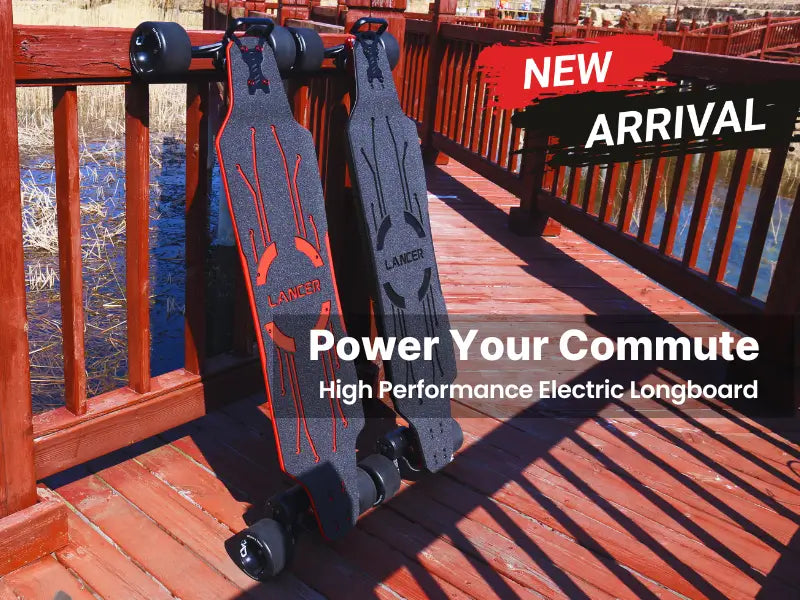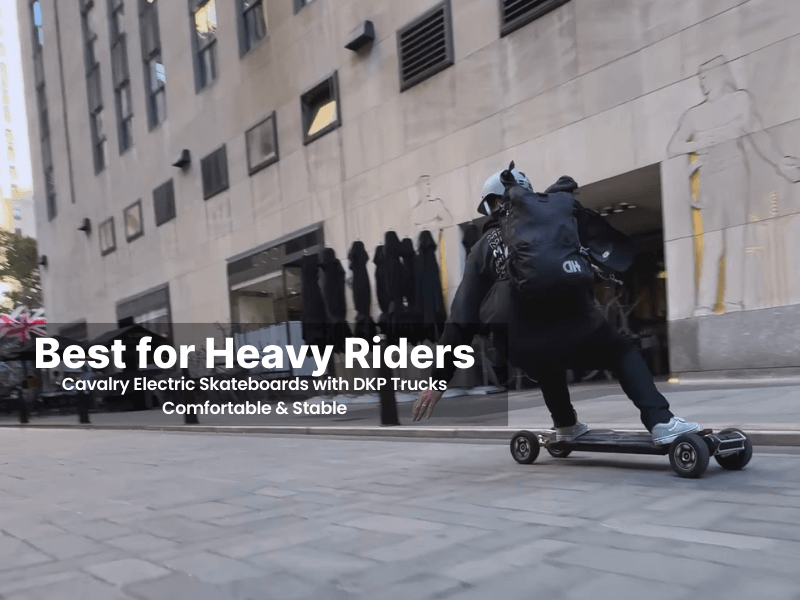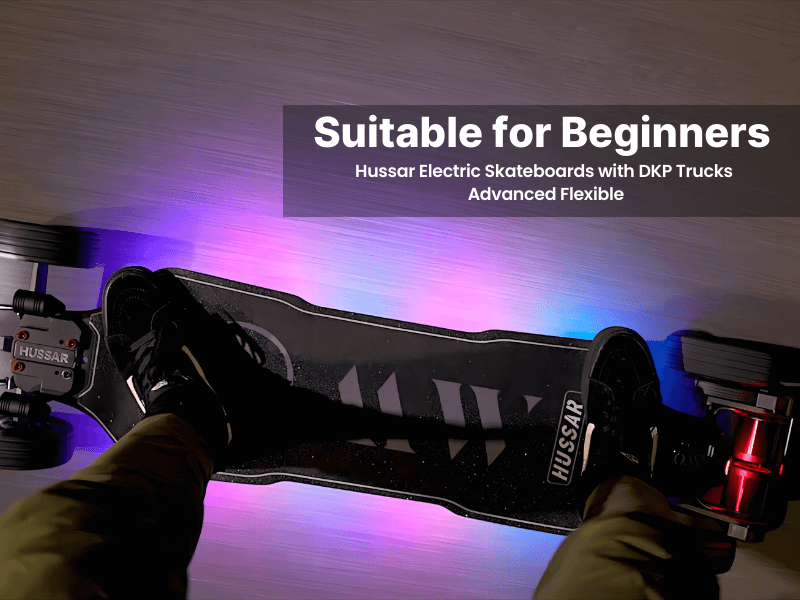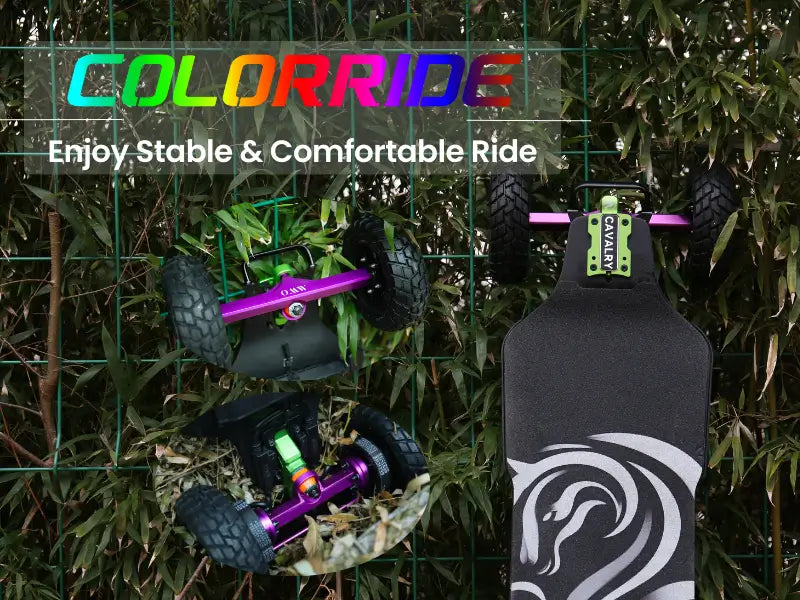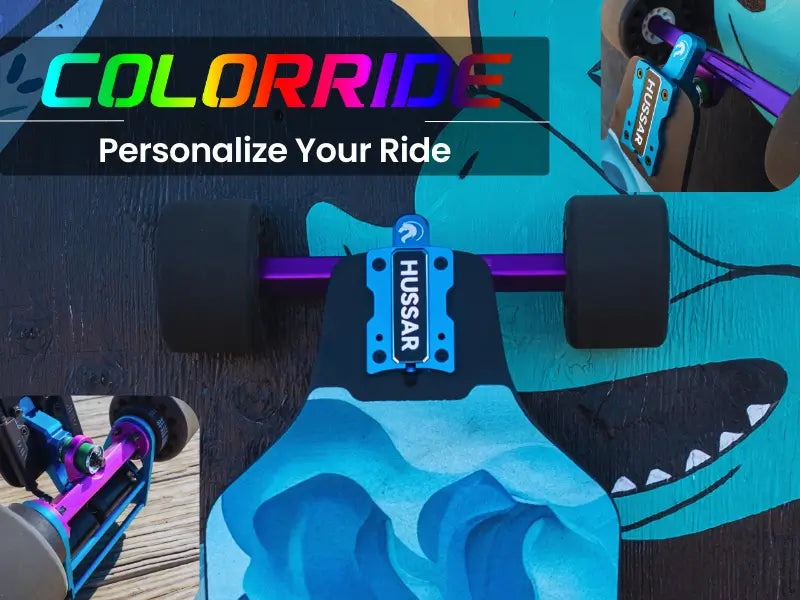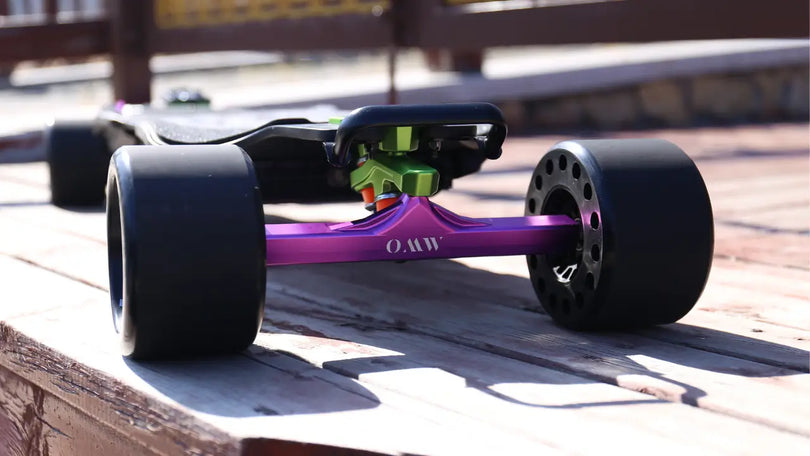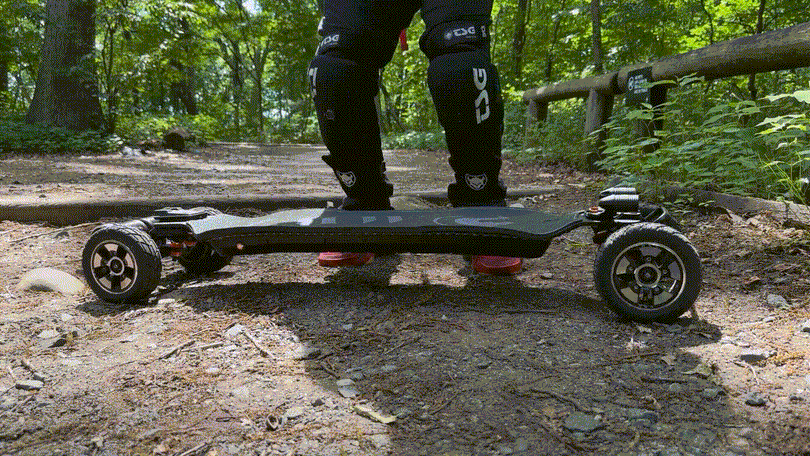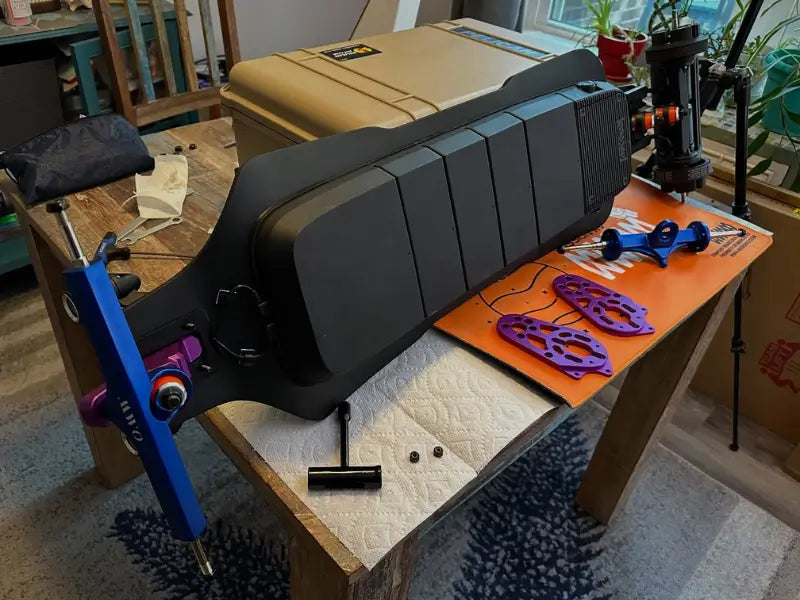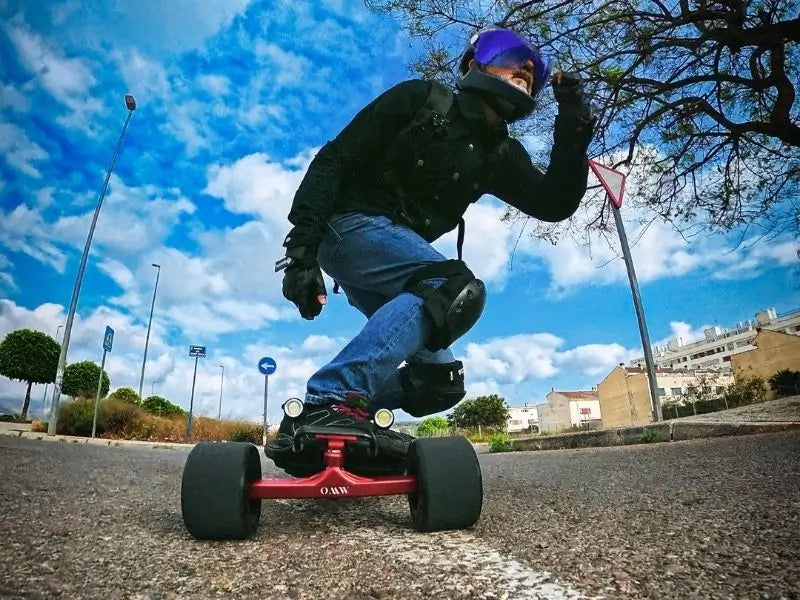If you're venturing into the world of electric skateboarding or you're a seasoned rider looking to level up, one of the most important choices you'll make is the type of drivetrain your board uses. The drivetrain directly affects how your board performs, feels, and handles different terrain. Among the four main drivetrain systems available - belt drive, gear drive, hub motor, and direct drive. In this article, we'll focus on a head-to-head comparison: Belt Drive vs. Gear Drive.
Belt Drive for Electric Skateboards
A belt drive uses an external motor connected to the wheel via pulleys and a belt, similar to traditional boosted boards and many DIY setups.
 Pros:
Pros:
- Smooth Power Delivery: Belt drives provide smooth torque transfer, offering a responsive and consistent ride, especially at varying speeds.
- Adjustable Gear Ratios: You can swap pulleys to adjust the gear ratio, allowing customization for torque (better for climbing hills) or top speed.
- Widespread Compatibility: Belt drive systems are common, with abundant parts (belts, pulleys, motors) and aftermarket support, making repairs easier and cheaper.
- Easier to Maintain: Replacing a belt is relatively simple and doesn’t require specialized tools or expertise.
- Better Heat Dissipation: The external motor design allows more airflow, reducing overheating.
- Cost-Effective Upfront: Belt drive systems are generally less expensive to manufacture and purchase compared to gear drives.
- Quiet Operation: While not silent, belt drives produce less noise than gear drives, especially at lower speeds.
Cons:
- Regular Maintenance Required: Belts wear out over time (typically every 500–1,500 miles, depending on usage, terrain, and rider weight), requiring periodic replacement.
- Susceptible to Debris: Belts can be damaged by dirt, rocks, or water, which may cause slippage or snapping, especially in off-road conditions.
- Less Efficient: Belt drives have slightly higher energy losses due to friction and flexing of the belt compared to gear drives.
- Potential for Belt Slippage: Under high torque or wet conditions, belts may slip, reducing efficiency and performance.
- Wear on Pulleys: Pulleys can wear out over time, especially if belts are not properly aligned, adding to maintenance costs.
Gear Drive for Electric Skateboards
A gear drive uses interlocking gears between the motor and wheel, often enclosed for protection.
 Pros:
Pros:
- Higher Efficiency: Gear drives have less energy loss (typically 95–98% efficiency) compared to belt drives (around 90–95%), translating to slightly better range and power delivery.
- Durability: Gears, often made of metal or high-strength composites, are more durable than belts and less prone to wear from debris or environmental factors.
- Low Maintenance: Gear drives require minimal maintenance, often just periodic lubrication and inspection, with no need for frequent part replacements.
- Consistent Performance: Gears don’t slip, providing reliable torque delivery even under high loads or in wet conditions.
- Better for Off-Road: Gear drives are sealed and less affected by dirt, rocks, or water, making them ideal for rugged terrains.
Cons:
- Higher Initial Cost: Gear drive systems are more expensive to manufacture and purchase due to precision engineering and materials.
- Complex Repairs: If gears or bearings fail, repairs are more complex, often requiring specialized tools or professional service, and replacement parts are costly.
- Noise: Gear drives are noisier, producing a distinct whine or hum, especially at higher speeds, which some riders find less pleasant.
- Fixed Gear Ratios: Unlike belt drives, gear ratios are typically fixed, limiting customization for torque or speed without replacing the entire gear set.
- Weight: Gear drives can be slightly heavier due to metal gears and robust housing, potentially affecting E-board agility.
Which Has Lower Long-Term Repair and Maintenance Costs?
Belt drives generally have lower repair and maintenance costs over the long term (e.g., 10,000 miles) due to cheaper parts ($10–$30 belts vs. $100–$300 gear sets) and simpler, DIY-friendly maintenance. For 10,000 miles, belt drives cost ~$287.50, while gear drives cost ~$350 (or more if a full replacement is needed). However, gear drives may become more cost-competitive in harsher conditions or with meticulous maintenance, as they require fewer replacements.

Recommendation
Looking for a high-performance electric skateboard with a drivetrain that matches your riding style? Below are some of the most recommended belt drive and gear drive electric skateboards in today’s market, ranging from commuter-friendly cruisers to all-terrain powerhouses. Whether you’re into city carving or off-road exploration, there’s a perfect drivetrain setup waiting for you.
Popular Belt Drive Electric Skateboard Models
- Evolve Hadean Bamboo / Carbon
Known for long range and carving performance. Smooth power delivery, robust app control, and interchangeable belt drive system.
- Backfire Zealot X
Affordable yet powerful, combining belt drive smoothness with sleek design and a high-performance battery.
A rising favorite among riders who value torque, portability, and customization.
Recognized for its flexibility, it offers a unique blend of durability and ride comfort.
With a powerful 6374 dual motor belt drive system, offering smooth power delivery and punchy acceleration, and modular compatibility with various wheel types (including 105mm MAD Wheels, 125mm MAD MAX, and 150mm Pneumatic Wheels ). Ideal for urban riders and enthusiasts seeking a balanced performance-to-price ratio.
Popular Gear Drive Electric Skateboard Model
- Exway Atlas Pro (Gear Drive Version)
A beast of a board available in both 2WD and 4WD gear drive configurations. The Atlas Pro is praised for its customizability, rugged build, and massive power output, making it a top-tier choice for riders who want an all-terrain monster that still maintains refinement and smart app integration.
- Meepo Hurricane (Gear Drive Variant)
The gear drive version of this popular model builds on the Hurricane’s already impressive specs by adding increased drivetrain durability, consistent torque delivery, and belt-free reliability. A favorite among budget-conscious riders seeking solid off-road performance with minimal maintenance.
- Bioboards / 3DServisas (High-End & DIY)
In the high-end and DIY scene, gear drive systems from Bioboards and 3DServisas are considered elite. These setups offer unparalleled power, durability, and the ability to handle extreme conditions. Though more complex and expensive, they’re the gold standard for experienced builders and serious performance enthusiasts.
Final Thoughts: Choosing the Right Drivetrain for You
Whether you're drawn to the tunable smoothness of belt drives or the rugged reliability of gear drives, the right drivetrain comes down to your riding style, terrain preference, and maintenance tolerance.
No matter which direction you choose, investing in a well-built drivetrain means more than just performance—it’s about ride confidence, long-term reliability, and unlocking the full thrill of electric skateboarding. Happy riding! ⚡

